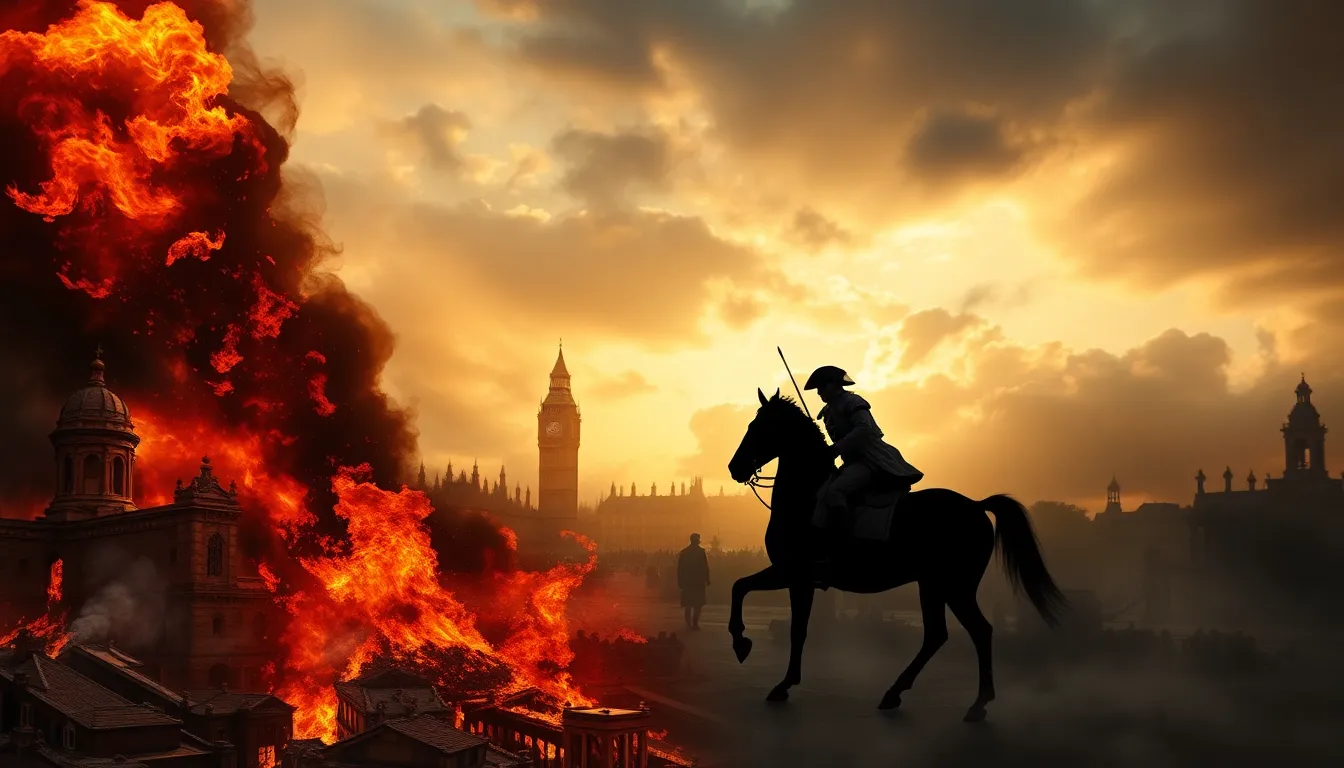Table of Contents
ToggleFor centuries, Nostradamus has been the go-to guy for anyone looking to peer into the future—like a mystical fortune cookie with a flair for the dramatic. His cryptic quatrains have sparked debates, inspired movies, and even made their way into the daily chatter of conspiracy theorists. But what’s the real deal with this 16th-century seer?
Overview of Nostradamus
Nostradamus, a historical figure celebrated for his prophetic insights, remains a source of fascination. His enigmatic quatrains capture the imagination, resulting in debates and inspiring films.
Historical Context
Nostradamus was born in 1503 in Saint-Rémy-de-Provence, France. He lived during a time marked by social unrest and shifting political landscapes. The Renaissance period influenced his writings and thinking drastically. Frequent wars, plagues, and natural disasters shaped societal perceptions of the future. Nostradamus’s background as a physician combined with his interest in astrology contributed to his unique worldview. His experiences undoubtedly informed his prophecies, making them resonate with his contemporaries.
Key Works
The collection of quatrains known as “Les Prophéties” serves as Nostradamus’s most famous work. This book consists of 942 poetic verses divided into ten centuries. Written in a cryptic style, those verses invite varied interpretations. Nostradamus also authored “The Letters,” which include correspondence addressing his predictions. His other notable works, such as “Almanac,” further demonstrate his skill in foresight. Scholars analyze these texts for themes of war, disaster, and societal change, reflecting his perception of impending events.
Famous Nostradamus Predictions

Nostradamus’ predictions cover a wide array of subjects, drawing significant attention throughout history. These foresights often blend historical events with obscure language, sparking interest and debate.
Major Predictions Explained
Nostradamus accurately foresaw the Great Fire of London in 1666. He depicted the blaze through vivid imagery in his quatrains. Another notable prediction linked to his work includes the rise of Napoleon, described as a mighty leader emerging from the West. Additionally, his verses hint at significant global conflicts, including the World Wars. These interpretations demonstrate how his ambiguous language invites ongoing analysis and discussion among historians and enthusiasts.
Impact on Popular Culture
Nostradamus’ impact on popular culture is profound and multifaceted. Movies, television shows, and books frequently reference his predictions. The mystique surrounding his foresight captivates audiences and inspires creators. Documentaries often explore his prophecies, presenting them in an accessible format. Furthermore, conspiracy theories arise from interpretations of his work, fueling public intrigue. Overall, these cultural engagements reinforce his status as a notable prophetic figure, bridging historical texts with contemporary narratives.
Interpretation of Predictions
Nostradamus’ predictions invite extensive analysis and interpretation. Various methods shape his enigmatic quatrains.
Analysis of Nostradamus’ Techniques
Nostradamus commonly employed symbolism within his verses. Each quatrain often features metaphorical language that obscures direct meaning. He utilized historical references and astrological alignments to convey foresight. Scholars note that his structure, comprising four-line stanzas, enhances the cryptic nature of his work. Ambiguity often leads to multiple interpretations, allowing diverse readings across decades. Nostradamus’ distinctive style captivates both enthusiasts and critics alike.
Controversial Interpretations
Interpretations of Nostradamus’ predictions often spark debate. Some analysts link his verses to major events, while skeptics argue about accuracy and relevance. Interpretations surrounding events like the September 11 attacks and the COVID-19 pandemic show the range of perspectives. These examples highlight how contemporary issues influence readings of his work. Researchers stress that context plays a crucial role in understanding his predictions. Consequently, ongoing discussions involving differing viewpoints enhance his legacy as a prophetic figure.
Criticism and Skepticism
Criticism surrounding Nostradamus’ predictions often centers on their ambiguous nature. Skeptics argue that his quatrains are so vague that they can apply to various events. This latitude leads to the conclusion that people perceive connections after occurrences rather than before. Critics highlight the lack of specific dates in his writings, making precise predictions nearly impossible to validate.
Arguments Against Validity
Many scholars underscore the absence of empirical evidence supporting Nostradamus’ prophetic abilities. Some claim interpretations can be manipulated to fit any situation, undermining the credibility of his foresight. The historical context of his time, filled with superstition, suggests outside influences might shape his work. Analysts point out that a significant number of his quatrains have vague implications, allowing for multiple readings. Critics also argue that coincidence plays a major role in perceived accuracy, questioning whether any correlation reflects genuine insight.
Responses from Supporters
Supporters assert that Nostradamus’ predictions remain relevant due to the accuracy of certain interpretations. Many believe his writings reflect genuine foresight about real historical events. Advocates highlight that dedicated study can lead to meaningful insights, challenging skeptics’ assertions. They argue that his language’s complexity adds depth, enabling valuable connections beyond the surface. Proponents also maintain that his impact on culture enhances the importance of engaging with his work, encouraging exploration of his texts.
Nostradamus in Modern Times
Nostradamus continues to fascinate audiences today, with interpretations of his predictions often surfacing in various contexts.
Relevance of Predictions Today
Nostradamus’ quatrains attract attention for their perceived relevance to modern events. Analysts frequently draw parallels between his verses and contemporary issues such as climate change, economic instability, and political unrest. Specific predictions about war and disaster resonate with today’s global landscape, prompting discussions among historians and enthusiasts. Predictions that hint at pandemics raise eyebrows in light of recent health crises. Ongoing interest in his interpretations highlights humanity’s quest for understanding future uncertainties.
Influence on Contemporary Thinkers
Contemporary thinkers reference Nostradamus as they navigate complex global scenarios. His work prompts discussions in literary circles, philosophy, and even psychology. Scholars examine his ambiguous language, contemplating how it reflects a collective human experience. Those who study his predictions often find inspiration or warnings relevant to current societal challenges. Followers debate the ethical implications of using his foresight in modern decision-making processes.
In the world of academia, Nostradamus serves as a case study for interpreting prophecy and its impact on culture.
Nostradamus remains a captivating figure whose predictions continue to spark debate and intrigue. His cryptic quatrains invite varied interpretations that resonate with contemporary issues, reflecting humanity’s ongoing struggles and aspirations. While skepticism surrounds the validity of his foresight, supporters find meaning in his work, viewing it as a lens through which to understand current events.
The cultural impact of Nostradamus is undeniable, influencing literature, film, and popular discourse. As society grapples with uncertainty, his prophecies serve as a reminder of the complexities of human experience and the search for understanding in an unpredictable world. Engaging with Nostradamus’ legacy invites reflection on the nature of prophecy and its relevance in shaping both historical and modern narratives.








